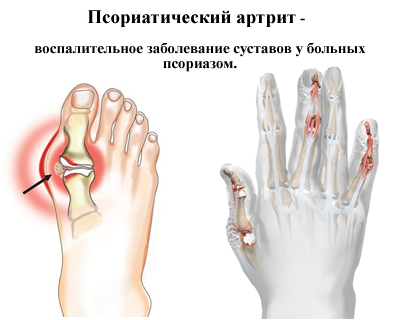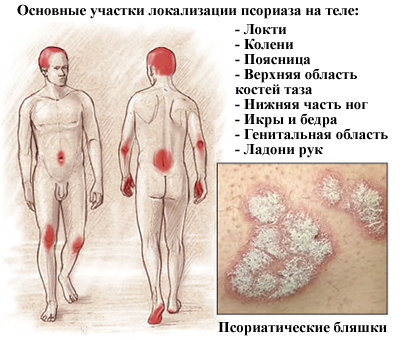Psoriasis is a common, chronic inflammatory disease that primarily affects the skin and sometimes the joints. Psoriasis affects approximately 2% of the population, with an equal distribution between the sexes.
Guttate psoriasis is a special form characterized by a pronounced clinical picture with the spread of small (from 0.5 to 1.5 cm) erythematous orange-pink papules, located mainly on the trunk.
Plaque (vulgar) psoriasis is characterized by the presence of a delimited red area of inflamed skin rising above the surface of the skin, covered with silvery-white scales; there is often a symmetrical distribution over the body.
In the article estet-portal.com you can learn in detail the effectiveness of eradication of beta-hemolytic streptococcus for the treatment of psoriasis.
Management of psoriasis: rationale for tonsillectomy and antibiotics
The pathogenesis of psoriasis is still not fully known. An inflammatory immune response, including activation of T-lymphocytes, dendritic cells, neutrophils and keratinocytes, leads to the formation of an inflammatory infiltrate and rapid skin renewal.
Psoriasis occurs in people with a genetic predisposition.
Factors that may increase genetic predisposition include skin trauma, smoking, alcohol, emotional stress, or drugs. Pathogens, in particular beta-hemolytic streptococci, are considered initiators.
Follow us on Facebook
Some bacteria are superantigens, which means they are capable of inducing multiple immune responses that result in T-cell stimulation and cytokine activation. A recent study has shown a direct involvement of streptococcal infection in the pathological mechanisms of psoriasis, such as the production of interleukin 17 (IL-17) and the activation of epidermal cells.
Antistreptococcal tactics in the treatment of guttate and plaque psoriasis
Therapy for plaque psoriasis includes topical corticosteroids and/or vitamin D analogs, phototherapy, and systemic drugs.
Antibiotics or tonsillectomy have been suggested for guttate psoriasis or chronic plaque psoriasis flare-ups; these treatments were introduced based on a suspected association between beta-hemolytic streptococcus infection and acute psoriasis.

In current practice, some physicians prescribe antibiotics for acute guttate psoriasis in the context of a co-infection, mainly pharyngitis, as first-line treatment or in addition to recommended procedures. However, studies conducted in different countries did not mention the use of antibiotic therapy.
Psoriasis treatment: experience with vitamin D
The following databases were searched for information on the efficacy of antibiotic prescribing and tonsillectomy to eradicate beta-hemolytic streptococcus in psoriasis: Cochrane Skin Group Specialized Registry, Cochrane Central Register of Controlled Trials of Controlled Trials - CENTRAL), Embase, MEDLINE, LILACS through January 2019. Results published in the Cochrane Database of Systematic Reviews March 5, 2019
Therapy of psoriasis with auxiliary methods
One study (N=43) evaluated penicillin (50,000 international units (IU)/kg/day, 14 days) versus erythromycin (250 mg 4 times/day, 14 days) versus no therapy. Side effects and skin changes were not measured.
1 study (N = 20) assessed penicillin (1.6 MU (million units) IM once/day) and no therapy. After six weeks, there was no statistically significant difference between the two groups in the number of participants with skin manifestations.
One study (N = 20) evaluated rifampicin (300 mg twice daily, 14 days) versus placebo. Skin changes were not measured.

One study (N=50) evaluated long-term treatment with azithromycin (500 mg daily) versus vitamin C. Adverse events were reported in the azithromycin group (10 of 30 had nausea and abdominal pain). In the azithromycin group, 18/30 versus 0/20 participants in the vitamin C group achieved a PASI 75 (Psoriasis Severity Index) at the end of week 48 of treatment.
One study (N = 29) evaluated tonsillectomy versus no treatment. 1/15 in the tonsillectomy group and 0/14 in the no-treatment group achieved PASI 90; and 3/15 participants in the tonsillectomy group and 0/14 in the no-treatment group achieved PASI 75.
The authors rated the certainty of the evidence as very low for all reported results because the five included studies were at high risk of bias, the results were inaccurate, and the trials had small numbers of participants with almost no children.
There is no certainty about the accuracy of the results obtained, or about the effectiveness and safety of antistreptococcal interventions.
Thank you for staying with estet-portal.com. Read other interesting articles in the "Dermatology" section. You may be interested in How important it is to correctly and timely determine the stage of psoriasis







Add a comment